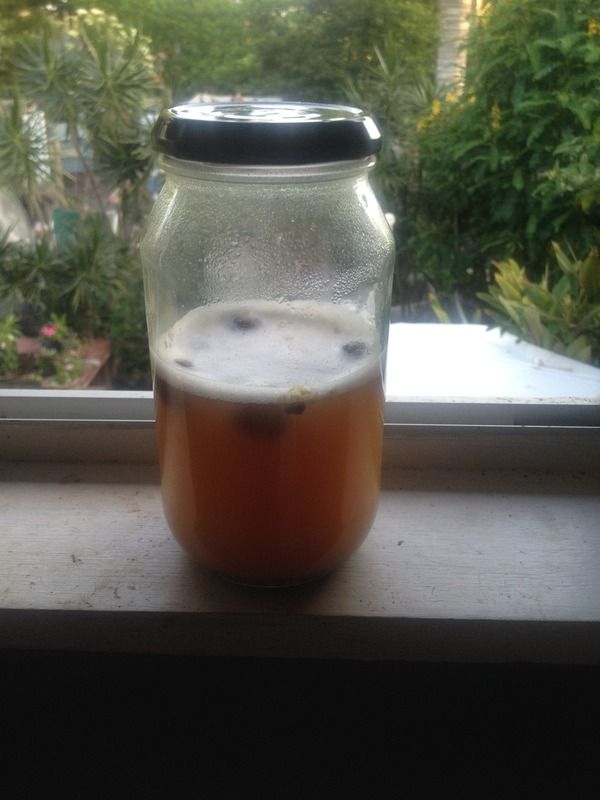eldernut
Well-Known Member
- Joined
- Nov 21, 2018
- Messages
- 49
- Reaction score
- 71
So I had some left over wort from my starter I did with commercial yeast this week. About a cups worth, didn't want to pour it down the sink so went outside and grabbed a few coffee berries from my tree. 48hrs later....

Its' hard to tell what's the scent of the yeast and what's the scent of the wort, but it smells not surprisingly like a really hoppy beer. Lots of piney notes, fresh greenery like juniper. This wort has a small amount of First Gold hops in it. But I don't think those notes are from it. When I compared it to the same wort with the commercial yeast it's very different in character. The other one smells estery like nectarines or peaches. I'd like to try and brew a batch with this. What do I need to do to get the yeast colony up to size? I have about 300mls or 1/2 quart here.
Sorry but I'm not geared up for any kind of petrie dish thing, I'm brewing extremely low tech as my interest is in traditional ales.
Thanks for your help.

Its' hard to tell what's the scent of the yeast and what's the scent of the wort, but it smells not surprisingly like a really hoppy beer. Lots of piney notes, fresh greenery like juniper. This wort has a small amount of First Gold hops in it. But I don't think those notes are from it. When I compared it to the same wort with the commercial yeast it's very different in character. The other one smells estery like nectarines or peaches. I'd like to try and brew a batch with this. What do I need to do to get the yeast colony up to size? I have about 300mls or 1/2 quart here.
Sorry but I'm not geared up for any kind of petrie dish thing, I'm brewing extremely low tech as my interest is in traditional ales.
Thanks for your help.







































![Craft A Brew - Safale BE-256 Yeast - Fermentis - Belgian Ale Dry Yeast - For Belgian & Strong Ales - Ingredients for Home Brewing - Beer Making Supplies - [3 Pack]](https://m.media-amazon.com/images/I/51bcKEwQmWL._SL500_.jpg)

















